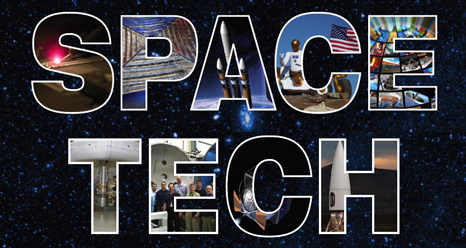
NASA has selected for possible flight demonstration 10 proposals from six U.S. states for reusable, suborbital technology payloads and vehicle capability enhancements with the potential to revolutionize future space missions.
After the concepts are developed, NASA may choose to fly the technologies to the edge of space and back on U.S. commercial suborbital vehicles and platforms. These types of flights provide opportunities for testing in microgravity before the vehicles are sent into the harsh environment of space.
“As we prepare to venture forth in future science and exploration missions, one of our greatest challenges in advancing cutting-edge technologies is bridging the gap between testing a component or prototype in a laboratory or ground facility and demonstrating that technology or capability in a mission-relevant operational environment,” said Michael Gazarik, NASA’s associate administrator for space technology in Washington. “Microgravity suborbital flights provide relevant environment testing at a small fraction of the costs required for orbital flights, while advancing technologies that benefit American businesses and our economy.”
The proposals selected for technology payloads include:
— “Technology Demonstration of Graphene Ion Membranes for Earth and Space Applications,” Johns Hopkins University, Baltimore
— “Spacecraft Disturbance Isolation and Rejection Platform,” NASA’s Jet Propulsion Laboratory, Pasadena, Calif.
— “Focal Plane Actuation to Achieve Ultra-High Resolution on Suborbital Balloon Payloads,” Arizona State University, Tempe
— “Rocket Flight of a Delta-Doped CCD Focal Plane Array to Prove Flight Rating,” Arizona State University
— “EDL Technology Development for the Maraia Earth Return Capsule,” NASA’s Johnson Space Center, Houston
The solicitation also included a topic on small spacecraft propulsion technologies sponsored by the agency’s Small Spacecraft Technology Program, which develops and demonstrates new capabilities employing the unique features of small spacecraft for science, exploration, and space operations. Five awards were made under this category:
— “Operational Demonstration of the MPS-120 CubeSat High-impulse Adaptable Modular Propulsion System,” Aerojet General Corp., Redmond, Wash.
— “Iodine RF Ion Thruster Development,” Busek Company Inc., Natick, Mass.
— “1U CubeSat Green Propulsion System with Post-Launch Pressurization,” Busek Company Inc.
— “Advanced Hybrid Rocket Motor Propulsion Unit for CubeSats (PUC),” Aerospace Corp., El Segundo, Calif.
— “Inductively Coupled Electromagnetic (ICE) Thruster System Development for Small Spacecraft Propulsion,” by MSNW LLC, Redmond, Wash.
Proposals in response to this solicitation came from NASA centers, federally funded research and development centers, universities, and industry. Following final contract negotiations, awards are expected to be worth as much as $250,000 for one year, with NASA’s investment totaling approximately $2 million for all awards.
NASA’s Flight Opportunities Program sponsored the solicitation through the agency’s Game Changing Development Program. Flight demonstrations will be funded separately and based on the availability of appropriated funds.
The Game Changing Development, Flight Opportunities, and Small Spacecraft Technology Programs are all part of NASA’s Space Technology Mission Directorate, which is innovating, developing, testing, and flying hardware for use in the agency’s future missions.
For more information about NASA’s Space Technology Mission Directorate, visit: http://www.nasa.gov/spacetech
Want to keep up-to-date with all things space? Be sure to “Like” AmericaSpace on Facebook and follow us on Twitter: @AmericaSpace



